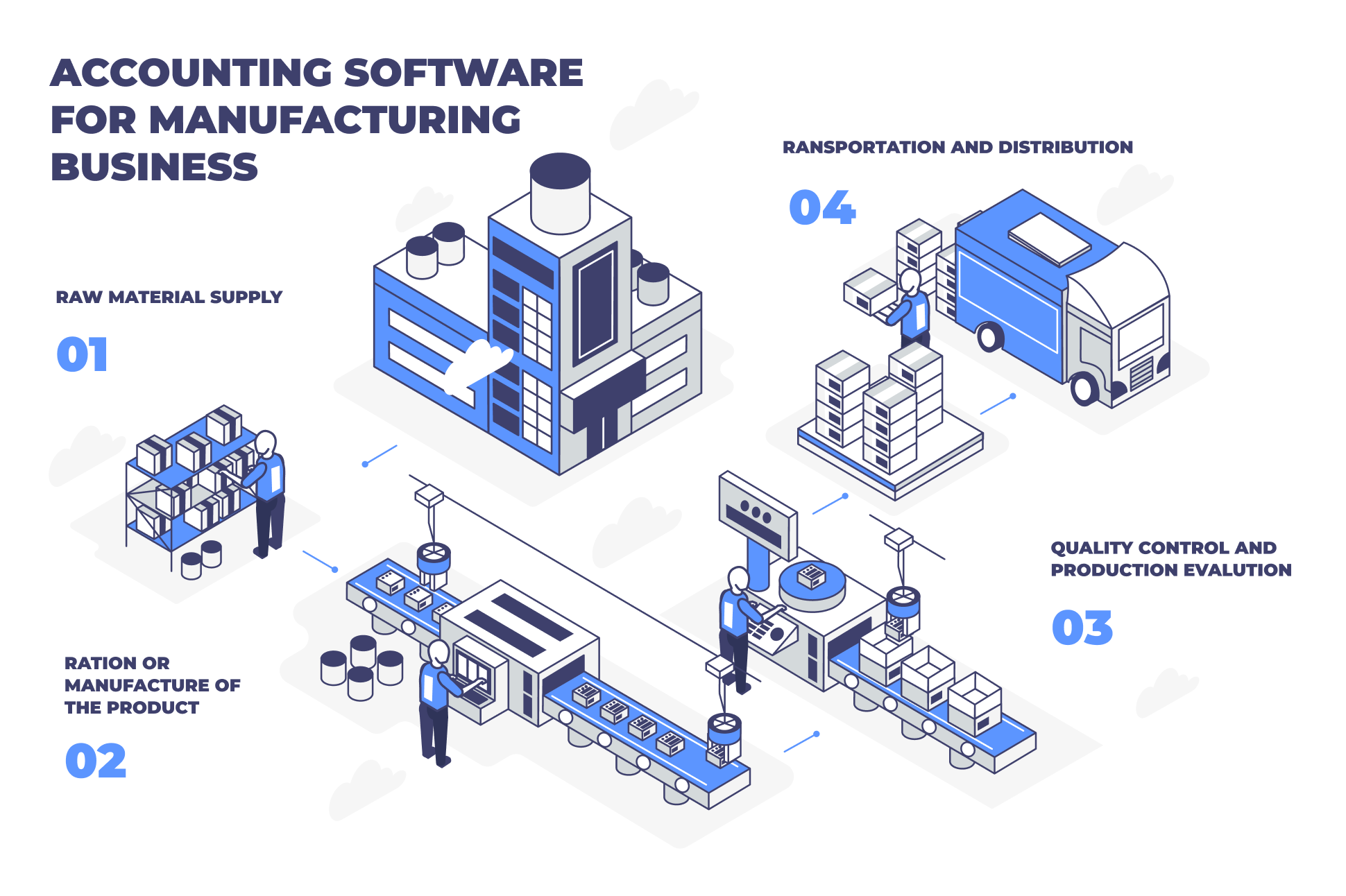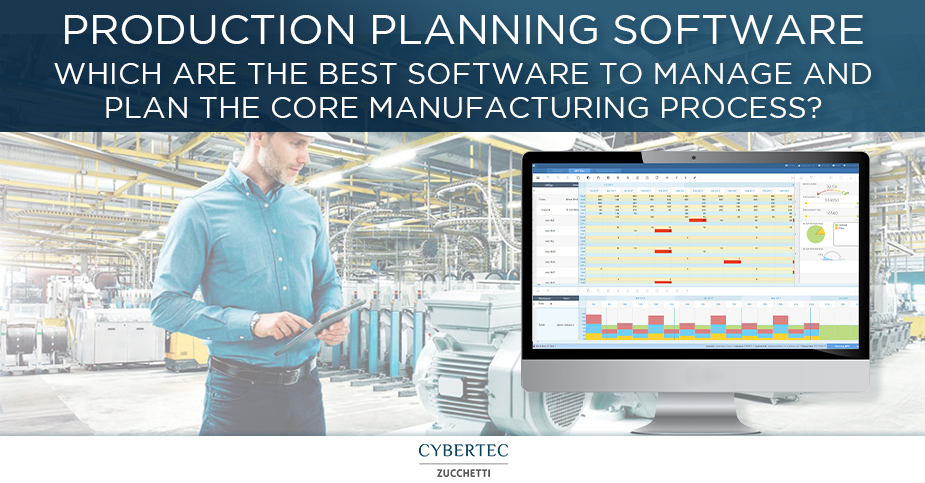Finding the best manufacturing production software can transform your business. It can improve efficiency, reduce costs, and streamline operations.
In today’s fast-paced manufacturing world, having the right software is crucial. It can help manage production schedules, track inventory, and ensure quality control. But with so many options available, choosing the best one can be daunting. This guide will help you understand what to look for in manufacturing production software.
We’ll explore features, benefits, and considerations to help you make an informed decision. Investing in the right software can lead to significant improvements in productivity and profitability. Stay with us to learn more about the best options available and how they can benefit your manufacturing process.

Introduction To Manufacturing Production Software
Manufacturing production software has become essential in modern industries. These tools help streamline processes, reduce errors, and improve efficiency. Companies now rely on these systems to maintain competitiveness and meet growing demands. This software integrates various functions, providing a unified view of production activities.
Emerging Trends
Manufacturing software continues to evolve rapidly. New technologies such as AI and IoT are being integrated. These advancements offer predictive analytics and real-time monitoring. Automation is also gaining traction, reducing manual intervention. Cloud-based solutions are becoming more popular, offering scalability and remote access.
Importance In 2025
The role of manufacturing production software will be crucial in 2025. Companies will need these tools to stay competitive. Efficient production management will be key to meeting market demands. The software will help in optimizing resource allocation and reducing waste. It will also support compliance with regulatory standards and enhance overall productivity.

Credit: zetran.com
Key Features To Look For
Choosing the best manufacturing production software can transform your business. The right software should offer essential features that enhance efficiency. Key features like automation capabilities and real-time data analytics can make a significant difference. Here’s what to focus on:
Automation Capabilities
Automation reduces manual work and errors. It streamlines processes, saving time and resources. Look for software that can automate repetitive tasks. This includes inventory management, scheduling, and reporting. Automation ensures consistency and improves productivity.
Real-time Data Analytics
Real-time data analytics provide instant insights. They help in making informed decisions quickly. The software should track performance metrics and generate reports. This enables you to monitor production and identify issues early. Real-time data can improve overall efficiency and quality control.
Top Manufacturing Software Solutions
Finding the right manufacturing production software can be a challenge. There are many solutions available, each with unique features. To help you choose, we’ve reviewed some of the top manufacturing software solutions. These tools can help streamline your processes and improve efficiency.
Solution A Overview
Solution A offers a user-friendly interface. It is known for its robust inventory management features. This software tracks raw materials and finished products. It also provides real-time updates on stock levels. Users can manage orders and shipments easily. The software integrates with various accounting systems, making financial management simpler.
Solution B Overview
Solution B focuses on production planning and scheduling. It helps manufacturers optimize their workflow. The software offers tools for demand forecasting. It also includes features for resource allocation and capacity planning. Users can monitor production progress in real-time. The software supports seamless communication between departments. It ensures that everyone is on the same page.
Benefits Of Using Manufacturing Software
Manufacturing software offers a range of benefits that help businesses grow. It streamlines operations, reduces costs, and improves overall efficiency. These advantages make manufacturing software a valuable tool for any production company.
Increased Efficiency
Manufacturing software automates many repetitive tasks. This saves time for employees. They can focus on more important work. Automated systems also reduce human errors. This leads to smoother operations and higher productivity. Real-time data tracking helps managers make quick decisions. This keeps the production line moving smoothly.
Cost Reduction
Using manufacturing software can lower costs. It reduces waste and optimizes resource use. Automated systems need fewer materials and less energy. This leads to significant savings over time. Predictive maintenance features can also prevent costly breakdowns. This keeps machines running longer and more efficiently.
Challenges In Implementation
Implementing the best manufacturing production software comes with its own challenges. Companies often encounter hurdles during the initial stages. These challenges can affect the overall efficiency of the software. Addressing these issues early can save time and resources.
Integration Issues
One major challenge is integration with existing systems. Many companies already use different software for various tasks. The new software must work seamlessly with these systems. Failing to do so can lead to data inconsistencies. This can disrupt the production process. Ensuring smooth integration is essential for success.
User Training
Another common challenge is user training. Employees need to understand how to use the new software. Without proper training, they may struggle with the new system. This can lead to mistakes and slow down production. Providing comprehensive training can help mitigate this issue. Training should be easy to understand and accessible to all employees.
Case Studies Of Successful Implementation
Understanding how companies successfully implement manufacturing production software can be very insightful. Real-life examples showcase the impact of this technology. Let’s dive into two case studies.
Case Study 1
A leading automotive parts manufacturer faced challenges with inventory management and production scheduling. They decided to adopt a comprehensive manufacturing production software. Here’s how it helped:
| Challenges | Solutions | Results |
|---|---|---|
| Inaccurate inventory data | Automated inventory tracking | Reduced inventory discrepancies by 45% |
| Poor production planning | Real-time production scheduling | Improved on-time delivery by 30% |
| High operational costs | Optimized resource allocation | Decreased costs by 20% |
The implementation of this software streamlined their processes. It led to significant improvements in efficiency and cost reduction. The company now enjoys better inventory control and smoother production runs.
Case Study 2
A small electronics manufacturer struggled with quality control and order management. They implemented a specialized manufacturing production software to tackle these issues. Here are the key outcomes:
- Quality Control: Integrated quality checks reduced defects by 35%.
- Order Management: Automated order processing improved order accuracy by 40%.
- Customer Satisfaction: Enhanced tracking increased customer satisfaction by 25%.
By using the new software, this electronics manufacturer achieved remarkable results. They experienced fewer defects, better order management, and happier customers. The software provided a clear, organized way to handle production and quality checks.
Future Trends In Manufacturing Software
The landscape of manufacturing software is evolving rapidly. With technological advancements, new trends are emerging that promise to transform the industry. This section delves into the future trends in manufacturing software, focusing on the impact of AI, Machine Learning, and the Internet of Things (IoT).
Ai And Machine Learning
Artificial Intelligence (AI) and Machine Learning (ML) are reshaping manufacturing processes. These technologies enable predictive maintenance, which helps in reducing downtime and improving efficiency.
AI and ML analyze vast amounts of data quickly. This analysis leads to better decision-making and optimized production workflows. Here’s how they are making a difference:
- Predictive Analytics: AI predicts equipment failures before they happen.
- Quality Control: Machine learning improves product quality by detecting defects early.
- Supply Chain Optimization: AI optimizes inventory levels and supply chains.
Internet Of Things (iot)
The Internet of Things (IoT) connects machines, devices, and sensors in manufacturing. This connectivity allows for real-time data collection and analysis, leading to smarter manufacturing.
IoT is revolutionizing the industry in the following ways:
- Real-Time Monitoring: IoT provides live updates on equipment status and performance.
- Energy Management: IoT helps in tracking and reducing energy consumption.
- Enhanced Safety: Connected devices monitor workplace safety and alert to hazards.
Integrating IoT with manufacturing software creates a smart factory environment. This integration enhances productivity and reduces costs.

Credit: cyberplan.it
Choosing The Right Software For Your Business
Finding the best manufacturing production software is crucial. It can streamline processes, reduce costs, and improve productivity. But, how do you choose the right software for your business? This section will help you make an informed decision by assessing your business needs and evaluating vendors.
Assessing Business Needs
Start by understanding what your business needs. Consider the following:
- Production scale: Is your business small, medium, or large?
- Budget: How much can you afford to spend?
- Integration: Does the software integrate with your existing systems?
- Features: What specific features do you need?
Here is a table to help you assess your business needs:
| Criteria | Questions to Ask |
|---|---|
| Production Scale | What is the size of your production? |
| Budget | What is your budget limit? |
| Integration | Does it integrate with current systems? |
| Features | What features are essential for you? |
Evaluating Vendors
Next, evaluate different software vendors. Keep these points in mind:
- Reputation: Check online reviews and ratings.
- Support: Does the vendor offer good customer support?
- Customization: Can the software be customized to fit your needs?
- Scalability: Will the software grow with your business?
Use the following table to compare vendors:
| Vendor | Reputation | Support | Customization | Scalability |
|---|---|---|---|---|
| Vendor A | 4.5/5 | 24/7 Support | High | Excellent |
| Vendor B | 4.0/5 | Email Support | Medium | Good |
By assessing your business needs and evaluating vendors, you can find the best manufacturing production software for your business.
Frequently Asked Questions
What Is The Best Software For Manufacturers?
The best software for manufacturers is ERP (Enterprise Resource Planning) systems. Popular options include SAP, Oracle, and Microsoft Dynamics. These solutions streamline operations, improve efficiency, and boost productivity.
What Are The 5 Types Of Software Used In Manufacturing?
The 5 types of software used in manufacturing are ERP (Enterprise Resource Planning), MES (Manufacturing Execution System), CAD (Computer-Aided Design), CAM (Computer-Aided Manufacturing), and PLM (Product Lifecycle Management). These tools enhance efficiency, quality, and productivity in manufacturing processes.
What Is The Best Production Planning Software?
The best production planning software includes SAP ERP, Oracle NetSuite, and Microsoft Dynamics. These tools offer robust features for efficient production management.
What Software Is Used For Production?
We use industry-standard software like Adobe Creative Suite, Final Cut Pro, and Pro Tools for production. These tools ensure high-quality results.
Conclusion
Choosing the right manufacturing production software is crucial. It streamlines operations, reduces errors, and boosts efficiency. Consider your specific needs and budget. Evaluate features, scalability, and user support. The right software can transform your manufacturing processes. Save time, cut costs, and improve productivity.
Research thoroughly before making a decision. Your business deserves the best tools available. Invest wisely and see the benefits.
